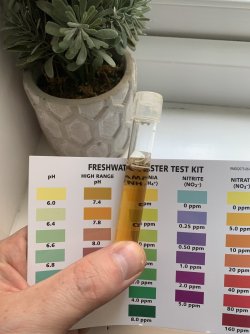3ppm is comparative to the level of ammonia your fish will produce through their poop and other bodily functions so by producing this with chemicals you get the same bacterial growth that you need when you have fish in the tank.@Wills @Essjay @jaylach
Thanks again for the help and from everyone.
I have watched a couple of YouTube videos now and I think I have got my head around how the test kits works. The colour chart seems very handy!
I’m starting to understand what’s harmful to the fish and the reasons why.
I fee more confident than I did a hour ago! Just a few things
- Could you please explain the 3ppm ammonia.
(What it is / why it’s got to be that amount and is it a solution that’s added to the tank) if you could send me a link for the correct one on Amazon id be really greatful as there is ALL KINDS on there.
- The tetra safe start - what is this exactly and what does it do
Sorry if I’m asking you to repeat
This is the ammonia I used when I last did a fishless cycle
https://www.amazon.co.uk/Knock-Out-...&qid=1690406298&sprefix=ammoni,aps,157&sr=8-1
It does not state ingredients on the site but as long as its the same one that I got should just be pure ammonia.
Tetra Safe Start is a bottled bacteria and elements that will help start the bacteria colony in your filters - like Essjay said though its just an aid rather than a solution. The overall cycle will just take time.
Wills




 That WILL clear your sinuses!
That WILL clear your sinuses! 


